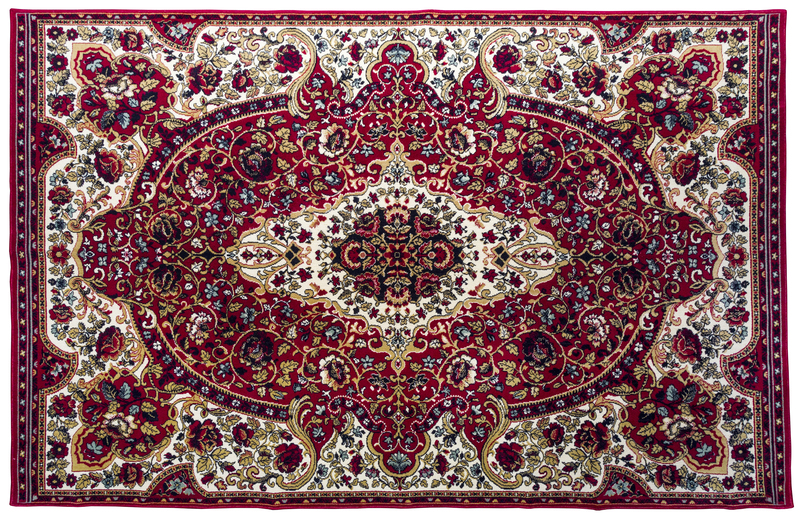Reveal the Know-How: Safe Sofa Cover Washing Techniques
Posted on 03/07/2025
Reveal the Know-How: Safe Sofa Cover Washing Techniques
Keeping your living space fresh and inviting often begins with the heart of the home: your sofa. One of the biggest factors in maintaining a clean and healthy environment is ensuring proper sofa cover hygiene. This comprehensive article uncovers essential sofa cover washing techniques that are not only safe and effective but also help extend the life of your upholstery. Whether you're searching for expert advice, tips for specific materials, or the best practices for routine maintenance, we've got you covered!
Why Is It Important to Wash Sofa Covers Properly?
Your sofa is a central piece of furniture that sees daily use, collecting dust, allergens, spills, pets hair, and bacteria over time. Improper cleaning can damage fabrics, fade colors, or shrink materials. Learning the right techniques for washing couch covers ensures cleanliness, preserves fabric quality, and keeps your living area vibrant and welcoming.
- Prevents allergen build-up and unpleasant odors
- Maintains the appearance and comfort of your sofa
- Increases the lifespan of sofa upholstery

Understanding Your Sofa Cover: Material Matters
Before jumping into safe sofa cover washing techniques, it's vital to know what kind of fabric you're dealing with. Sofa upholstery and slipcovers can be made from various materials, each with its specific care needs.
Common Sofa Cover Fabrics
- Cotton: Breathable and easy to clean, but may shrink if not handled properly.
- Linen: Elegant and cool, but requires gentle care to avoid wrinkles and shrinkage.
- Polyester: Durable and stain-resistant, generally more forgiving during washes.
- Rayon or Viscose: Often blended with other materials, delicate and sensitive to water.
- Microfiber: Soft, stain-resistant, and easy to maintain when instructions are followed.
- Velvet: Luxurious but prone to damage from harsh washing or improper drying.
Always check your sofa manufacturer's care label for detailed washing instructions before proceeding!
Pre-Wash Preparation: Setting Yourself Up for Success
Thorough preparation is key to safe sofa cover cleaning techniques. Follow these important steps to avoid mishaps:
- Read the Label: Locate and carefully read the care label attached to your sofa cover for manufacturer-recommended cleaning instructions (e.g., hand wash, machine wash, dry clean only).
- Test for Colorfastness: Dampen a white cloth with mild soap and rub gently on a hidden corner. Check for color transfer - if color comes off, dry cleaning or professional cleaning is safest.
- Vacuum First: Use a vacuum with an upholstery attachment to remove crumbs, dust, and debris from both the cover and underlying cushions.
- Spot Clean Stains: Treat spills and stains immediately with an appropriate upholstery cleaner or a gentle homemade solution of mild detergent and water. Blot (don't rub!) the area gently.
- Remove Hardware: Take out zippers, buttons, or decorative fasteners if possible, or cover them with a protective cloth to avoid snagging or damage during washing.
Top Safe Sofa Cover Washing Methods
1. Machine Washing Sofa Covers
Many modern sofa covers are machine washable, but caution is necessary! Here's how to safely machine wash your sofa slipcovers:
- Use Cold or Lukewarm Water: Hot water may cause shrinking or fading. Stick with temperatures under 30?C (86?F).
- Select a Gentle or Delicate Cycle: This reduces agitation and protects fabric integrity.
- Mild Detergent Only: Avoid bleach or harsh chemicals. Opt for a liquid mild detergent to prevent residue buildup.
- Wash Covers Separately: Wash slipcovers alone to avoid color bleeding and to give them plenty of space.
- Fasten Zippers and Close Velcro: To prevent snagging, zip up and secure any closures.
- Don't Overload: Overstuffing your washing machine can result in uneven cleaning and wrinkles.
Pro Tip: Always air dry covers whenever possible! High heat from dryers can cause shrinking or damage to the fabric fibers.
2. Hand Washing Sofa Slipcovers
For delicate materials such as linen, rayon, or certain decorative fabrics, hand washing is the safest approach. Here's how:
- Fill a bathtub or large basin with cool water.
- Add a small amount of gentle, non-bleach detergent.
- Submerge the cover and agitate gently with your hands.
- Pay extra attention to stained spots: treat them gently with a soft cloth or sponge.
- Drain the water, then rinse thoroughly with cool water until all soap is washed away.
- Press (don't wring!) excess water out using a clean towel.
3. Steam Cleaning Sofa Covers
Steam cleaning is a useful sofa cover washing technique for non-removable covers. Steam helps sanitize and refresh upholstery without soaking the fabric. Make sure your fabric can tolerate moisture and heat before proceeding.
- Test on a small area first.
- Use the upholstery attachment nozzle.
- Hold the steamer several inches from the fabric.
- Allow to dry thoroughly before use.
4. Dry Cleaning For Sensitive Fabrics
Materials like wool, silk-blend, velvet, or covers labeled "dry-clean only" require professional care. If unsure, it's safer to consult a trusted cleaner to avoid frustration and expensive mistakes.
Best Practices for Drying Washed Sofa Covers
Improper drying can undo all your careful cleaning work. Preserve the quality of your covers with these drying tips:
- Air Dry Whenever Possible: Lay covers flat on a clean towel or hang them over a clothesline indoors, away from direct sunlight to prevent fading.
- Avoid Using High-Heat Dryers: If using a dryer, select the lowest heat or "fluff" setting, and check covers regularly. Remove while slightly damp to minimize wrinkles and prevent damage.
- Reshape While Damp: Gently stretch and reshape covers to their original form so they fit snuggly back on your sofa.
- Allow Ample Drying Time: Ensure covers are thoroughly dry before placing them back on the cushions to prevent mold or mildew.
Top Tips for Stain Removal and Preventing Damage
Even with safe sofa cover washing techniques, sometimes stubborn spills or stains may persist. Follow these targeted tips to tackle specific trouble spots:
- Grease stains: Sprinkle baking soda on the grease and let it absorb for 10-15 minutes before gently brushing off. Then treat with mild detergent and warm water.
- Ink or pen marks: Blot the spot, then apply rubbing alcohol to a cotton swab and dab gently.
- Wine or juice: Blot immediately with a clean, dry towel. Use a mixture of vinegar and water to treat and rinse well.
- Pet stains: Treat with an enzyme-based cleaner to break down odors and bacteria.
What NOT to Do When Cleaning Sofa Covers
- Never use bleach or abrasive chemicals, unless specifically directed by care label.
- Don't wring or twist covers, which can distort the fabric's shape.
- Don't skip the drying step or return damp covers to the sofa.
- Never iron velvet or corduroy covers--use a steamer instead for wrinkles.
- Don't overload your washing machine--allow plenty of room for free movement.
Routine Maintenance: Keeping Sofa Covers Clean for Longer
Prevention is often easier than cure. Regular maintenance helps minimize the frequency of deep cleaning and protects your sofa investment. Here are some expert sofa slipcover cleaning techniques for routine care:
- Vacuum your sofa and covers at least once a week to remove dust and debris.
- Rotate cushions and flip slipcovers regularly to distribute wear evenly.
- Spot clean spills as soon as they happen to prevent stains from setting.
- Curtain or window shades can reduce sun exposure, guarding against fading fabrics.
- Encourage family members and pets to avoid eating on the sofa to minimize messes.

Frequently Asked Questions about Sofa Cover Washing Techniques
Can I machine-wash any type of sofa cover?
Not all sofa covers are suited for machine washing. Always read the care label. Generally, cotton, polyester, and certain blends are washable, but silk, velvet, and wool blends often require dry cleaning or special care.
How often should I wash my sofa covers?
Wash removable sofa covers every 3-6 months, or more frequently in high-traffic homes with kids or pets. Regularly vacuum and spot clean to extend intervals between washes.
Will washing sofa covers shrink them?
Shrinking can happen if covers are washed in hot water or dried on high heat. To avoid this, use cold water and air dry whenever possible.
What if my sofa covers aren't removable?
For sofas with fixed upholstery, regular vacuuming, spot cleaning, and occasional steam cleaning are your best options. For deep stains or dirt, contact a professional upholstery cleaning service.
Can I iron my sofa covers?
Many fabrics can be ironed on a low setting, but always check the care label first. For delicate fabrics like linen, use a pressing cloth and low heat. Avoid ironing velvet, microfiber, or synthetic blends directly.
Conclusion: Extend Your Sofa's Life with Safe Sofa Cover Washing Techniques
Investing a little time to master safe sofa cover washing techniques pays off in a cleaner, healthier, and more beautiful home. By following label instructions, choosing correct cleaning methods for your fabric, and practicing good drying and maintenance habits, you ensure that your sofa retains its comfort and charm for years to come.
- Identify your sofa cover material--know your fabric!
- Follow tried-and-true methods for washing, drying, and stain removal.
- Maintain regularly for best results and long-lasting freshness.
Your couch is the hub of relaxation and togetherness--give it the expert care it deserves by using these safe sofa cover cleaning techniques to keep your living space spotless and cozy!



